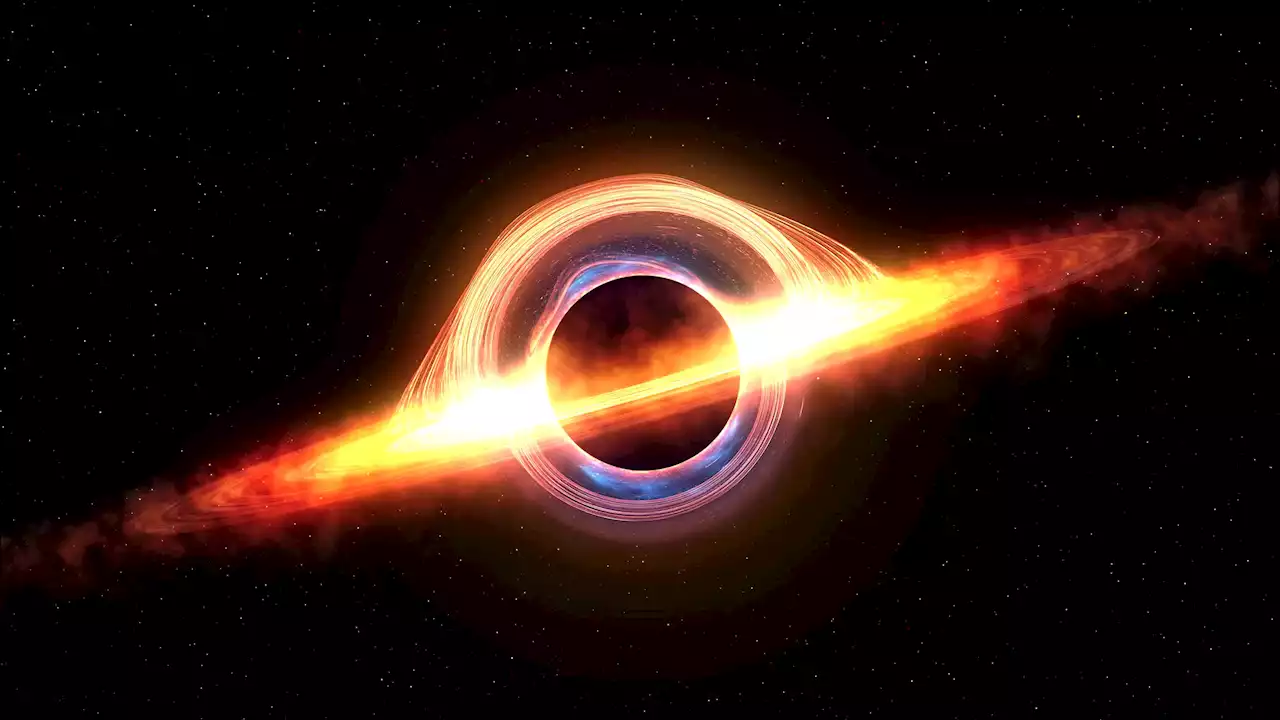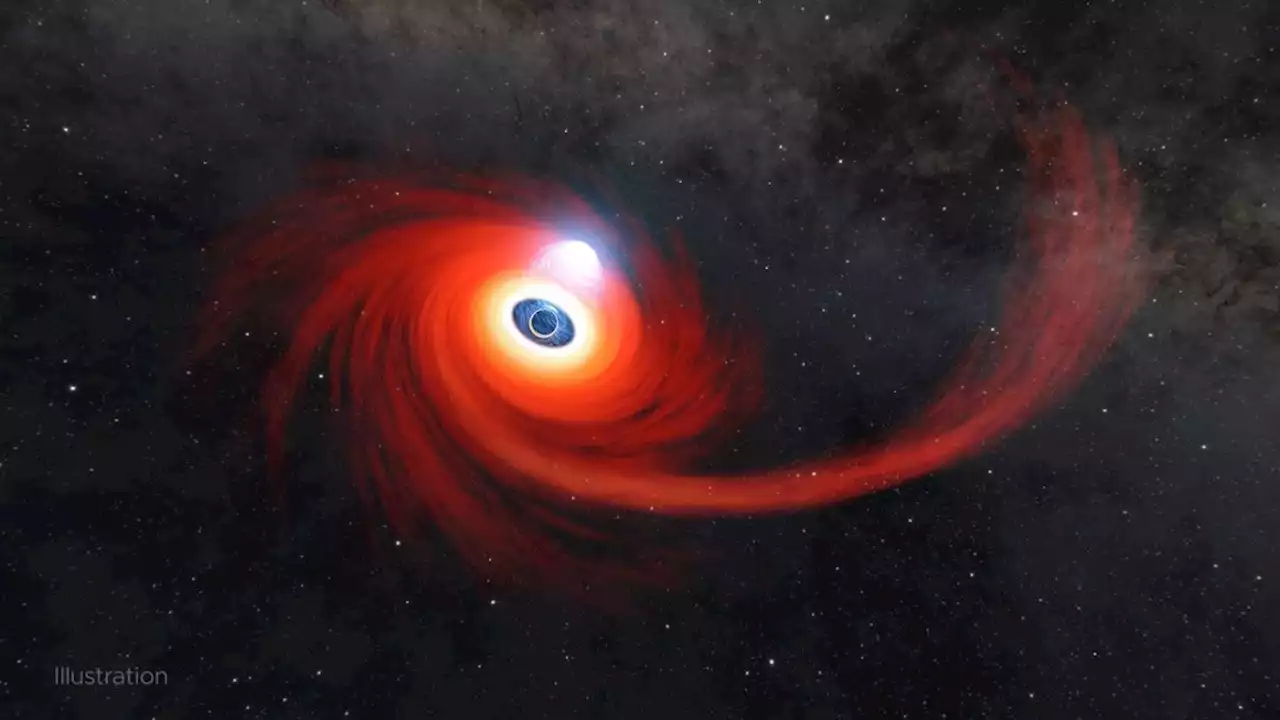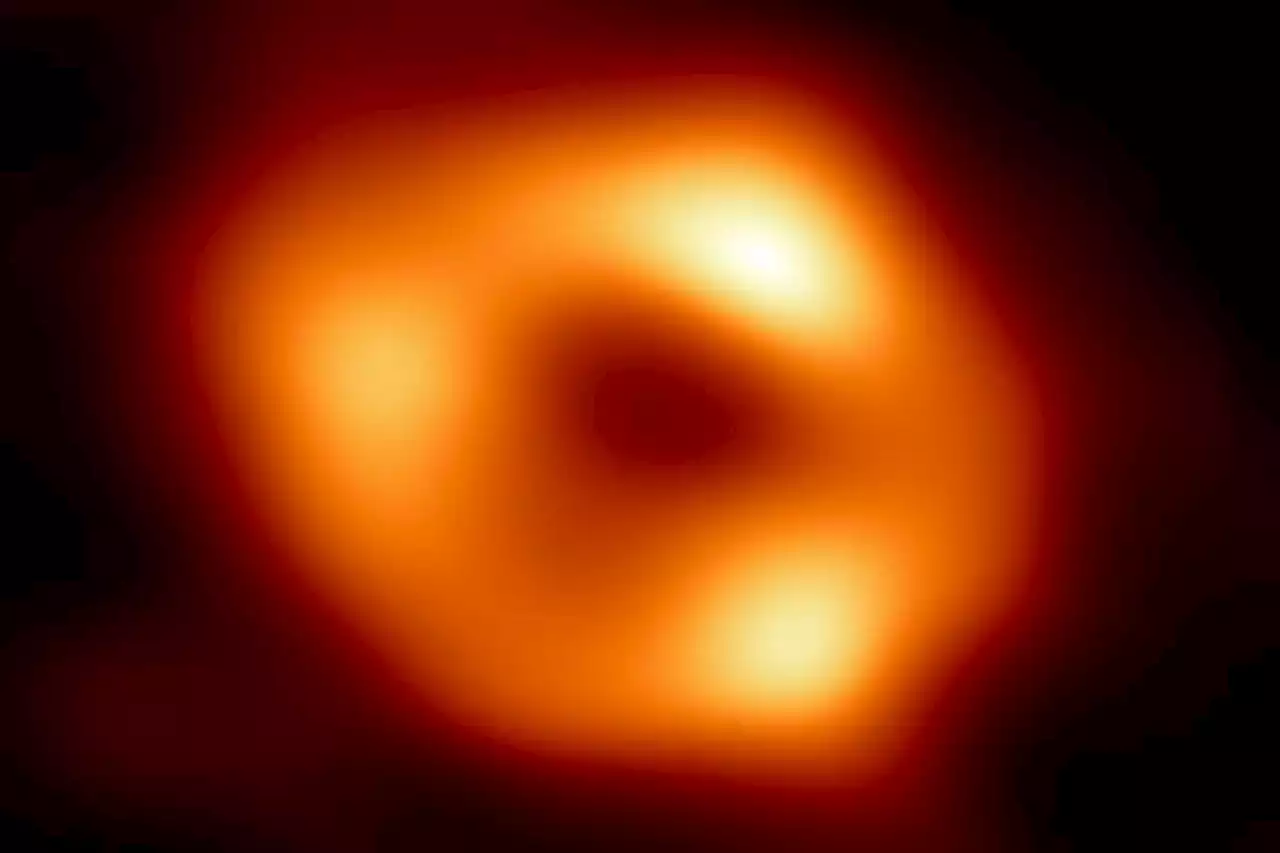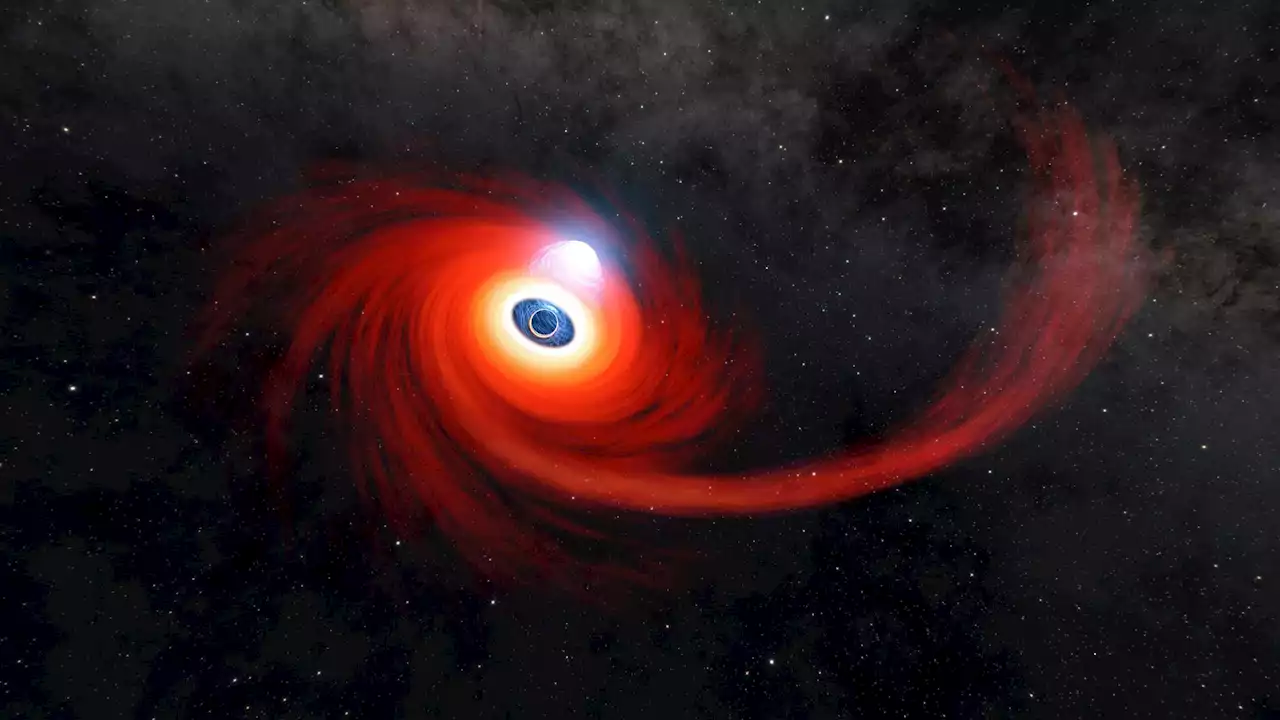NASA Gets Unusually Close Glimpse of Black Hole Destroying a Star Recent observations of a black hole devouring a wandering star may help scientists understand more complex black hole feeding behaviors. Multiple NASA telescopes recently observed a massive black hole tearing apart an unlucky star
satellite is the most sensitive space telescope capable of observing these wavelengths of light, and the event’s proximity provided an unprecedented view of the corona’s formation and evolution, according to a new study published in theThe work demonstrates how the destruction of a star by a black hole – a process formally known as a tidal disruption event – could be used to better understand what happens to material that’s captured by one of these behemoths before it’s fully devoured.
When a star wanders too close to a black hole, the intense gravity will stretch the star out until it becomes a long river of hot gas, as shown in this animation. The gas is then whipped around the black hole and is gradually pulled into orbit, forming a bright disk. Credit: Science Communication Lab/Most black holes that scientists can study are surrounded by hot gas that has accumulated over many years, sometimes millennia, and formed disks billions of miles wide.
“Tidal disruption events are a sort of cosmic laboratory,” said study co-author Suvi Gezari, an astronomer at the Space Telescope Science Institute in Baltimore. “They’re our window into the real-time feeding of a massive black hole lurking in the center of a galaxy.”The focus of the new study is an event called AT2021ehb, which took place in a galaxy with a central black hole about 10 million times the mass of our Sun .
Scientists think that the stream of gas gets whipped around a black hole during such events, colliding with itself. This is thought to create shock waves and outward flows of gas that generate visible light, as well as wavelengths not visible to the human eye, such as ultraviolet light and X-rays. The material then starts to settle into a disk rotating around the black hole like water circling a drain, with friction generating low-energy X-rays.
Argentina Últimas Noticias, Argentina Titulares
Similar News:También puedes leer noticias similares a ésta que hemos recopilado de otras fuentes de noticias.
 NASA watched a black hole eat a wandering starNASA used multiple telescopes to watch a black hole eat a star that wandered too close to it. Here's what we learned.
NASA watched a black hole eat a wandering starNASA used multiple telescopes to watch a black hole eat a star that wandered too close to it. Here's what we learned.
Leer más »
 NASA watches black hole snack on destroyed star's corpseRobert Lea is a science journalist in the U.K. whose articles have been published in Physics World, New Scientist, Astronomy Magazine, All About Space, Newsweek and ZME Science. He also writes about science communication for Elsevier and the European Journal of Physics. Rob holds a bachelor of science degree in physics and astronomy from the U.K.’s Open University. Follow him on Twitter sciencef1rst.
NASA watches black hole snack on destroyed star's corpseRobert Lea is a science journalist in the U.K. whose articles have been published in Physics World, New Scientist, Astronomy Magazine, All About Space, Newsweek and ZME Science. He also writes about science communication for Elsevier and the European Journal of Physics. Rob holds a bachelor of science degree in physics and astronomy from the U.K.’s Open University. Follow him on Twitter sciencef1rst.
Leer más »
 We saw the supermassive black hole at the centre of our galaxy in 2022Astronomers using the Event Horizon Telescope released a picture in May of Sagittarius A*, the black hole at the centre of the Milky Way
We saw the supermassive black hole at the centre of our galaxy in 2022Astronomers using the Event Horizon Telescope released a picture in May of Sagittarius A*, the black hole at the centre of the Milky Way
Leer más »
 Astrophysicists Hunt for Second-Closest Supermassive Black Hole – 3,000,000 Times the Mass of the SunA behemoth black hole, as massive as the one at the center of the Milky Way, is hosted by a dwarf galaxy less than 1 million light-years away. Invisible so far — maybe not for long. A way to observe what could be the second-closest supermassive black hole to Earth has been suggested by two astrop
Astrophysicists Hunt for Second-Closest Supermassive Black Hole – 3,000,000 Times the Mass of the SunA behemoth black hole, as massive as the one at the center of the Milky Way, is hosted by a dwarf galaxy less than 1 million light-years away. Invisible so far — maybe not for long. A way to observe what could be the second-closest supermassive black hole to Earth has been suggested by two astrop
Leer más »
 |i|Ain't No Mo'|/i| is Broadway's Most Important New PlayWriter-star Jordan E. Cooper discusses his biting satire about the Black American experience.
|i|Ain't No Mo'|/i| is Broadway's Most Important New PlayWriter-star Jordan E. Cooper discusses his biting satire about the Black American experience.
Leer más »
